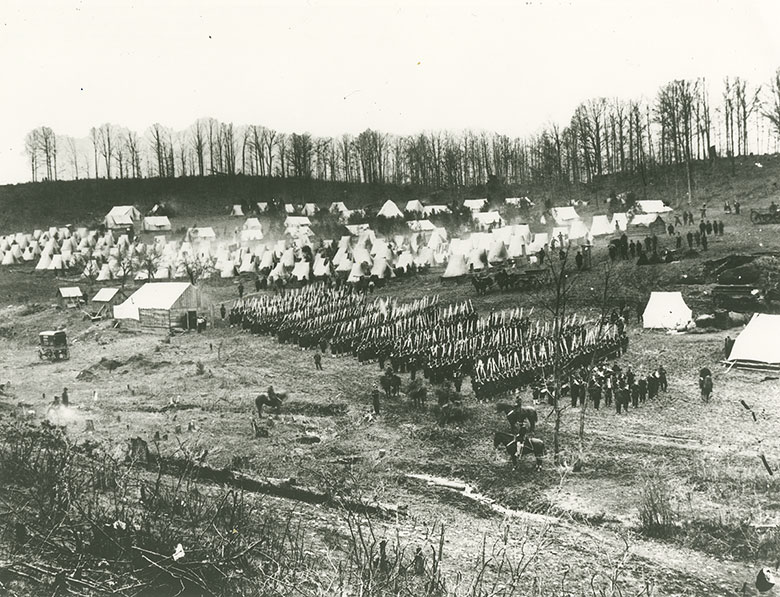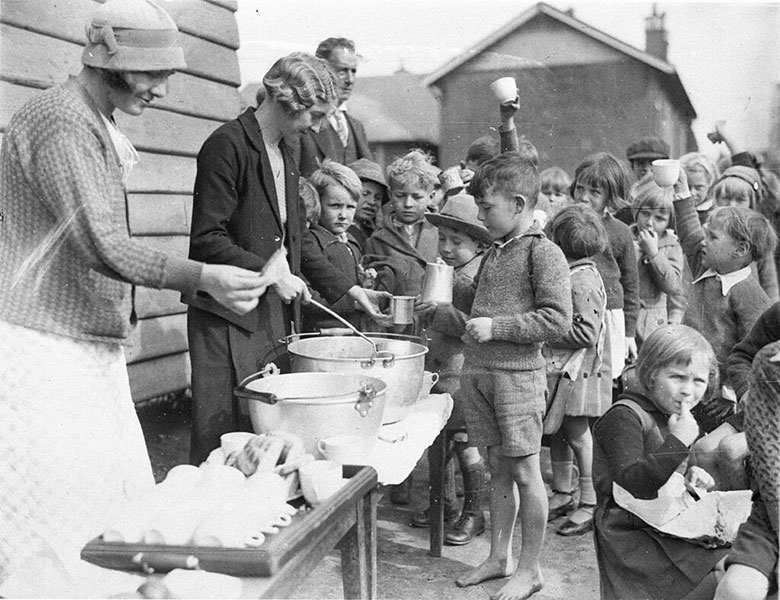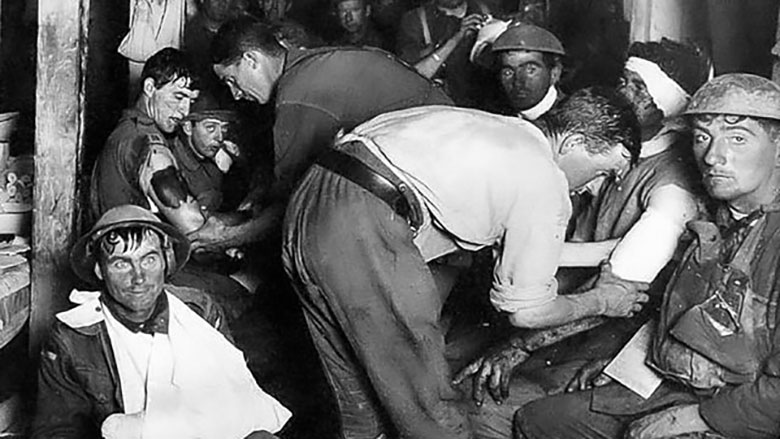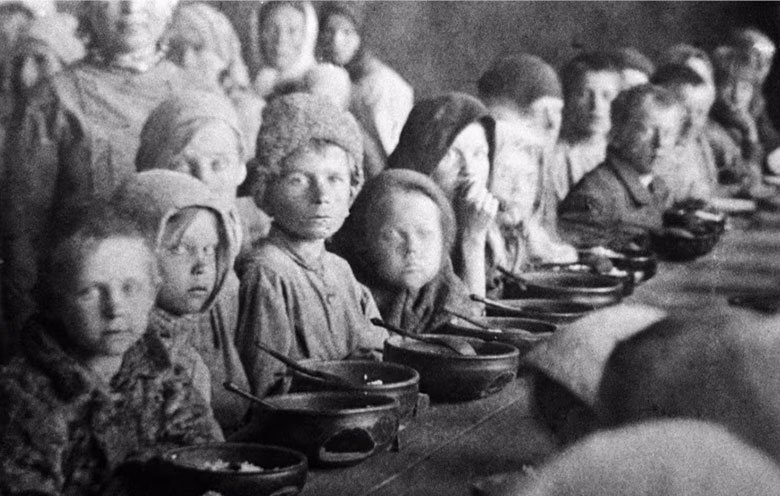At the risk of stating the obvious, when things truly fall apart, life after SHTF won’t be pleasant. You’d think this should go without saying but based on many of the comments I read from preppers across America, some of you are just itching for a collapse to happen. You’re buying various types of gear, stocking up on assorted foods, and arming yourself to the teeth, and patiently waiting, saying, “let it happen already.”
You want SHTF; you want TEOTWAWKI; you want another civil war.
We’re going to explore this phenomenon of some preppers wishing for the end of days. I’m going to deliver, with the help of historical examples, some cold, hard truths about what life after the collapse will really be like.
Optimism Bias and Morals
I don’t know why some people think life after SHTF is something to wish for. Is it fiction that creates this illusion that the collapse will somehow be fun? It’s understandable if that’s the case. Whenever I watch Mad Max, I catch myself imagining that I’d be the one holding the gasoline. When I watch The Walking Dead, I imagine I’d be one of the survivors. It’s no fun to imagine ourselves as the more likely outcome in those situations—dead or undead.

But why do we think this way? Well, it’s not just fiction shaping our views. Science has found that most of us are wired with what’s called the ‘optimism bias.’ Studies, like those by neuroscientist Tali Sharot, show that we’re naturally inclined to believe good things will happen to us, even in dire situations. In her research, she found that around 80% of us exhibit this bias.
It’s an evolutionary adaptation – being optimistic can make individuals more likely to take risks and venture into the unknown, which in the past could have led to finding new resources or habitats. But in the modern world, and especially in the context of life after SHTF, this bias can lead to a dangerous underestimation of the realities.
Many of us underestimate the risks, picturing ourselves as the exception – the hero, the survivor. Although this optimism bias might have once been an evolutionary advantage, it can now lead us astray.
There is also a moral problem here. Desiring a collapse means hoping for suffering on a grand scale. Children going hungry, the elderly struggling without care, communities torn apart, and countless lives lost. It’s not just about the romanticized, rugged survivor fighting against all odds. It’s also about the innocent mother who can’t find medicine for her sick child, or the elderly man who’s left cold and alone. Wishing for such circumstances, no matter how prepared you think you are, is wishing for pain and hardship on countless others. It’s a stark moral stance to take, and one that each of us should deeply reflect upon.
True preparedness stems from a community spirit. It goes beyond personal safety to ensuring that our neighbors, friends, and community members are also protected. The essence of prepping is hoping you never have to use those preparations but being ready if the time comes.
Wishing for a collapse puts personal thrill over community welfare, and it doesn’t align with the true ethos of being a prepper.
Let’s look at 5 harsh realities that all of you wishing for a collapse probably are not considering.
Harsh Realities of Life After SHTF
1 – Loss of Life
When discussing a potential societal collapse, the most somber and profound consideration is the loss of human lives. While many discussions in the prepper community focus largely on material preparation, we must confront and understand the gravity of this inevitable consequence.

YOU could be the one who ends up dead. Even WORSE, it could be your spouse or your children. For those of you wishing for a second Civil War, let’s use the first civil war as an example.
The American Civil War, fought between 1861 and 1865, remains the deadliest conflict in U.S. history in terms of American lives lost. Current estimates suggest that anywhere from 620,000 to 750,000 soldiers died as a result of the war, with many more civilians losing their lives indirectly due to conflict-related consequences like disease and malnutrition.
To provide perspective, the U.S. population in 1860 was approximately 31.4 million. If we take the higher estimate of 750,000 deaths, that’s almost 2.4% of the population. Transposing this percentage to the current U.S. population (estimated at over 330 million), a conflict with a similar fatality rate would result in nearly 8 million American lives lost.
It’s worth noting, that of those survivors, 1 in 13 veterans were amputees.
As we prepare for uncertain futures, it’s important to be aware of the human cost that could accompany any significant societal upheaval. This understanding underscores the importance of community, cooperation, and prevention in all prepper strategies.
If you’re wishing for a civil war, it’s because you’ve never been in a war. No one in the right mind would hope for that.
2 – Scarcity of Resources and Supplies
The collapse of society would not only lead to a significant loss of life but would also bring about severe scarcity of vital resources and supplies. The images of fully stocked bunkers and pantries, often glamorized in media—and in my own media, if I’m candid, dramatically oversimplify the actual challenges of a widespread societal breakdown.
To understand this better, let’s go back to the days of the Civil War.
Even with a lesser population and an abundance of agricultural resources, blockades and disrupted supply chains led to acute shortages. For instance, salt, an indispensable preservative before the advent of refrigeration, became a rare commodity in the South—often more valuable than gold. This shortage saw the prices of essential goods surge dramatically: a barrel of flour that cost $6 before the war escalated to an astonishing $275 during its peak.
Another chilling reminder is the Nazi’s siege of Leningrad. The blockade resulted in dire food shortages, pushing residents to extremes like consuming wallpaper paste, leather, and in the most harrowing instances, resorting to cannibalism.
Translating these historical precedents to today’s context is sobering. Our modern economies operate on a “just-in-time” supply chain model, where goods are produced and delivered almost exactly when needed. This system, while efficient, is very fragile. Any disruption can lead to instant shortages.
Supermarket shelves could be barren within days, if not hours. Even locally produced food might become inaccessible with transportation breakdowns. Consequently, many could face the grim reality of skipped meals, malnutrition, and weakened immunity.
The intricate web of modern healthcare, dependent on consistent supplies and electricity, would be in jeopardy. Essential medications like insulin or antibiotics could be out of reach (3 ways to stock antibiotics). Hospitals, already strained, could face crippling shortages, rendering even basic medical procedures perilous.
Worse still, without clean water and sanitation, disease outbreaks—like cholera or dysentery—would become rampant. A scarcity of hygiene products could also see a rise in skin diseases and infections.
This scarcity sets off a vicious cycle: Malnutrition weakens immune systems, heightening vulnerability to diseases. Sickness without adequate medical care can then lead to prolonged suffering or even death.
A post-collapse world’s harsh reality would be relentless.
3 – Breakdown of Law and Order
The foundation of any functioning society lies in its ability to maintain order and justice, ensuring that individuals can go about their lives with a reasonable expectation of safety and fairness. This delicate balance, upheld by institutions, laws, and mutual respect, becomes exceedingly vulnerable in times of chaos.
In life after SHTF, one of the most immediate and alarming repercussions is the disintegration of law and order. The very fabric that binds communities and ensures the safety and security of its members starts to unravel, leading to a rise in criminal activity and lawlessness. History offers ample examples. The fall of great civilizations often saw an accompanying spike in crime.
Post-World War II Europe, particularly in cities that bore the brunt of the conflict, witnessed a marked increase in theft, black markets, and violence. Infrastructure was destroyed, policing was minimal, and desperation drove individuals to acts they might have previously deemed unthinkable.
Similarly, during the U.S. Great Depression of the 1930s, while many were lauded for their resilience and community spirit, there was also an undeniable surge in crime rates. Bank robberies, thefts, and even organized crime found fertile ground in the economic desperation of the era.

In a modern societal breakdown, the effects of life after SHTF would be even more pronounced given the dense population centers and the complexity of urban environments. Without the restraints of law enforcement, we’d see:
- Vigilantism: In the absence of formal law enforcement, individuals or groups might take the law into their own hands, leading to unchecked and often brutal justice.
- Increase in Criminal Activity: Desperation could push many towards theft, looting, or worse. Property crimes would likely skyrocket, and personal safety could be at constant risk.
- Exploitation: Vulnerable groups, including women, children, the elderly, and marginalized communities, might face higher risks of exploitation or harm.
- Formation of Warlord-like Entities: Just as we’ve seen in failed states in contemporary times, power vacuums can lead to the rise of warlord-like figures or groups who wield power through force, further destabilizing regions.
- Prison Breakouts: A potential overlooked aspect could be the security of prisons. Without proper oversight, there’s a possibility of mass prison breakouts, releasing a multitude of criminals back into society.
- Distrust Among Communities: Trust, a fundamental social contract, would erode. Neighbors could become suspicious of one another, and community cohesion could disintegrate.
This underscores the urgent need to avoid such a breakdown in the first place and to work towards societal solutions that ensure the well-being and security of all its members.
4 – Mental Health Challenges
The aftermath of life after SHTF brings with it not only physical perils but profound mental and emotional burdens. Beyond the immediate stress of survival, individuals would grapple with the profound trauma of witnessing the suffering and potential loss of loved ones, which could leave lasting psychological scars.

One of the understated challenges of a societal collapse in the modern era would be the breakdown of communication systems. We have grown accustomed to instant communication, being able to check in on friends and family with a simple message or call. In the wake of a collapse, those communication lines could be severed. The anxiety of not knowing the fate of distant loved ones, unable to ascertain their well-being or even if they are alive, would be an immense emotional weight to bear.
Historical events have shown us the severe mental toll of crises. (How to develop mental fortitude.)
During the World Wars, many soldiers came home with “shell shock,” now identified as post-traumatic stress disorder (PTSD). Those who survived significant disasters, whether man-made or natural, often deal with anxiety, depression, and PTSD for extended periods. In a post-collapse scenario, a widespread emergence of PTSD would likely affect not just those on the front lines but the broader populace.
One of the most agonizing experiences would be watching loved ones suffer, whether from illness, hunger, or violence. The emotional pain of seeing a family member or close friend in distress, coupled with feelings of helplessness, can significantly intensify feelings of grief, guilt, and trauma.
Added to this is the chronic stress of daily survival challenges, from sourcing food to avoiding threats. Such continuous stress can exacerbate anxiety and depression. The isolation that might arise from mistrust or the sheer challenge of navigating a changed world can further amplify these mental health issues.
5 – You Might Not Like the New World
When envisioning life after SHTF, many individuals, influenced by optimism bias, might imagine a fresh start, a blank slate upon which a better world can be built. History, however, offers cautionary tales that suggest that the aftermath of societal upheaval often doesn’t lead to utopian dreams but rather replaces one set of challenges with another, oftentimes more severe.
Iranian Revolution

A prominent example can be drawn from the Iranian Revolution of 1979. While the revolutionaries sought to overthrow a monarchy they perceived as corrupt and oppressive, the subsequent establishment of the Islamic Republic introduced a strict interpretation of religious governance. The personal freedoms that many had enjoyed, especially women’s rights and cultural openness, were heavily curtailed. Many who had initially supported the revolution soon found themselves living under conditions they hadn’t anticipated and yearned for the past freedoms.
The Russian Revolution provides another illuminating case. The overthrow of the Tsarist regime in 1917 was fueled by a desire for greater equality and an end to imperial oppression. However, the ensuing civil war, followed by the establishment of the Soviet Union, resulted in the rise of an authoritarian regime that, under Stalin, would be responsible for purges, famines, and a reign of terror that affected millions.

In Africa, the decolonization movements of the 20th century brought immense hope for self-governance and prosperity. Yet, in some nations, the departure of colonial powers led to power vacuums, dictatorships, and civil wars. Countries like Zimbabwe, which had once been seen as promising new nations post-independence, faced economic collapse and political repression under leaders like Robert Mugabe.
In all these cases, the desire for change was genuine and deeply felt. But the outcomes underscore the unpredictable nature of societal transformations. The structures that replace old systems might not necessarily cater to the dreams and aspirations of all its citizens. Often, they can lead to unintended consequences, where freedoms are further restricted, and living conditions deteriorate.
So, if you’re wishing for a global reset, know that the potential aftermath of a societal collapse could yield a new world that might not align with your ideals or hopes. While change is a constant in history, ensuring that change is for the better requires more than just dismantling the old.
Summary
The idea of life after SHTF is not one to be taken lightly. It’s not an escape from the present but a descent into an uncertain and potentially much harsher reality. From the profound loss of human lives, the scarcity of vital resources, the breakdown of law and order, the mounting mental health challenges, to the unpredictability of the new world that emerges—each dimension paints a sobering, frankly horrible, picture.
While we should be prepared for uncertainties, it’s equally important to understand the depth and breadth of challenges that come with such scenarios. The emphasis should not be on wishing for or romanticizing such events but on preventing them, on building resilience, and fostering communities that can withstand stresses together.
I encourage all of you to prepare for the worst, but always hope for the best.

8 comments
I agree ten thousand percent with this well thought out article. Exactly on the spot and full of common sense.
I tried to cover these same bases in my personal thoughts and I could come up with nothing that resembled what we see in the movies.
There are a lot of unforseen scenarios that could change in a moments notice. It would’ve been bad enough if America didn’t have so many enemies but the enemies are growing in number both nationally and internationally.
Many have come to the country within the last few years but generally, they have been taking up residence for the last few decades or so.
When it hits the fan, none of it is going to be pretty and no one should ever want this once glimmering city on the hill to to crumble into a shouldering heap.
Things are lining up to get very bad in America and the contents of this article are some of the same issues I have been preaching for years but my words have been met with ridicule and incredulous laughter.
I don’t know how to get people I care about to take the threats seriously. I know the author of this article can only provide valuable information to those that are willing to read it and see its solid importance.
None of this is a laughing matter and people may not realize just how bad things can get but as the author, Mr. Derrick James mentions, plan for the worst but hope for the best.
Extremely interesting article, a little scary to read, and realize every word might be our future. People need to wake up, and quick.
*** FYI. Your links are not working correctly.
Wow, SHTF indeed! I tried to tell people this same thing for years and they say anything is better than what we have. B.S.!!! Great read…
Great article with a lot of truth. I’m prepared for what I know is coming but not just supplies but knowledge for my kids and grandkids. Preparation is more than stuff. Thanks for keeping watch.
The pro-terrorist (Hamas) demonstrations have made it clear they have a national network that can mobilize thousands on a schedule with professionally prepared signs and public address systems. It is reasonable to assume that they have the ability to mobilize thousands of armed terrorists to strike at our unprotected electric, transportation, and communication infrastructure. I see this as a clear and present danger that is virtually inevitable. A simple low-tech attack like the 9/11 disaster can create national chaos.
” Vulnerable groups, including women, children, the elderly, and marginalized communities, might face higher risks of exploitation or harm.” What is “marginalized communities”? Straight white Christian males?
What is “marginalized communities”? Straight white Christian males?
This.